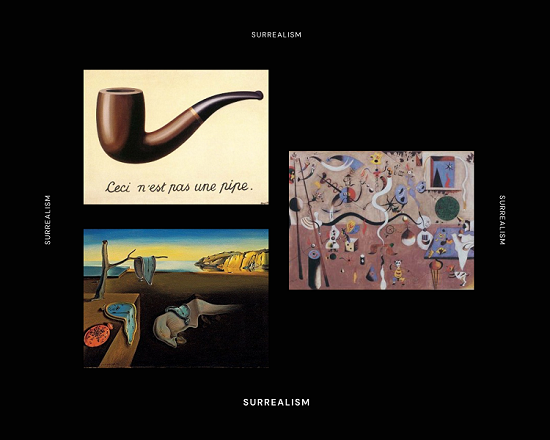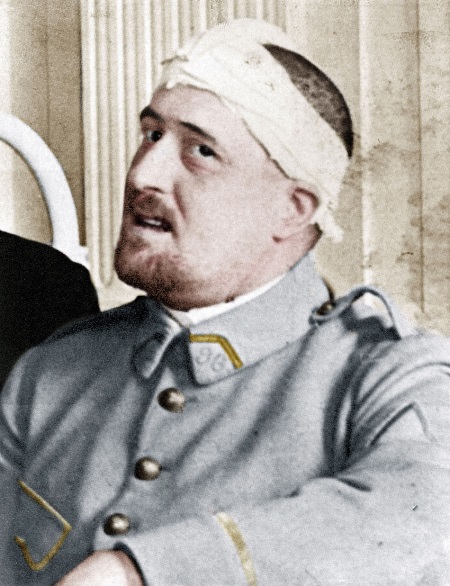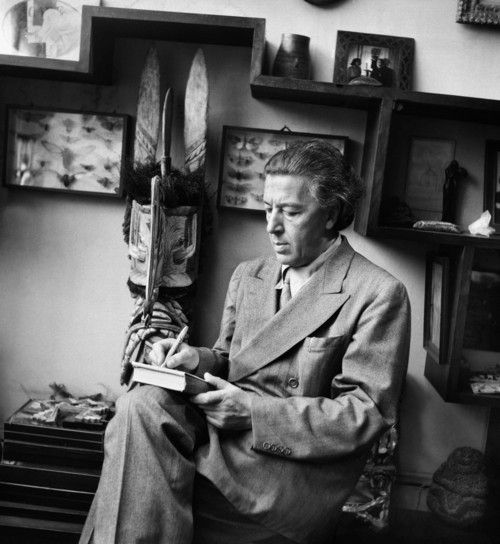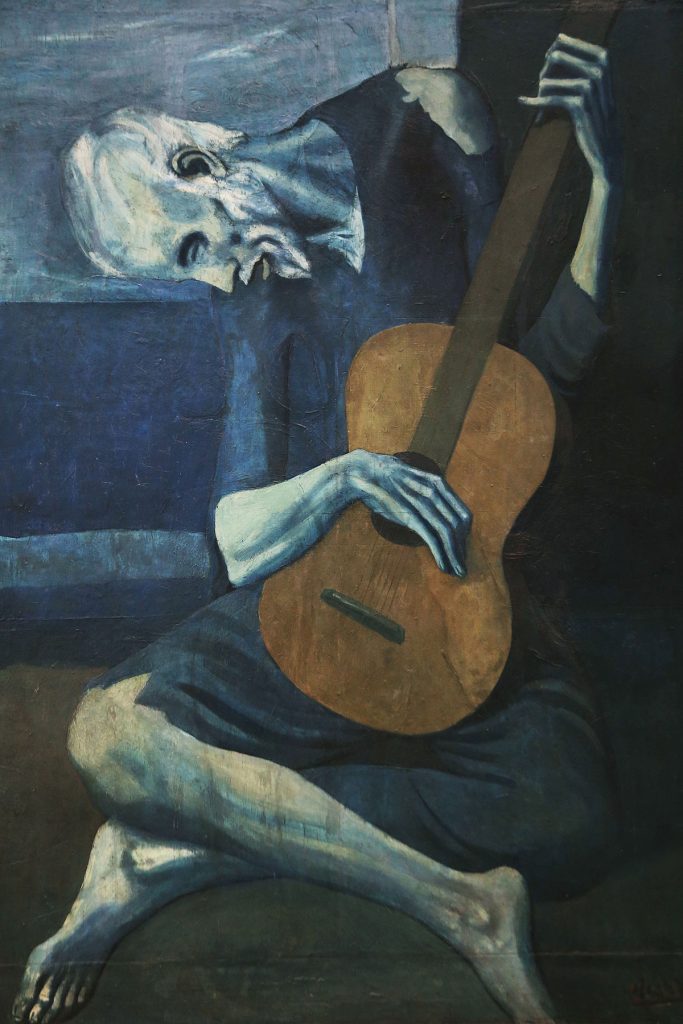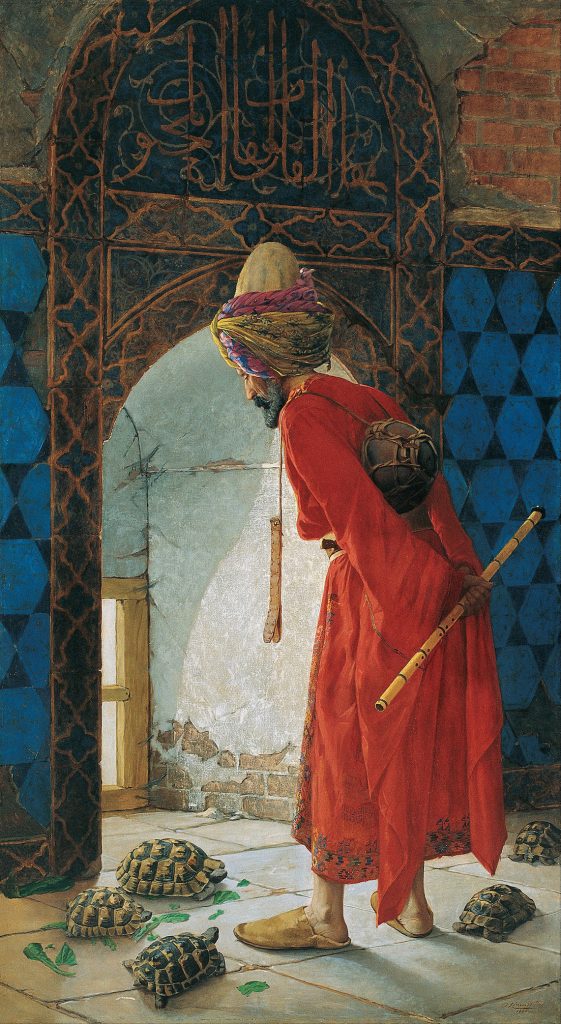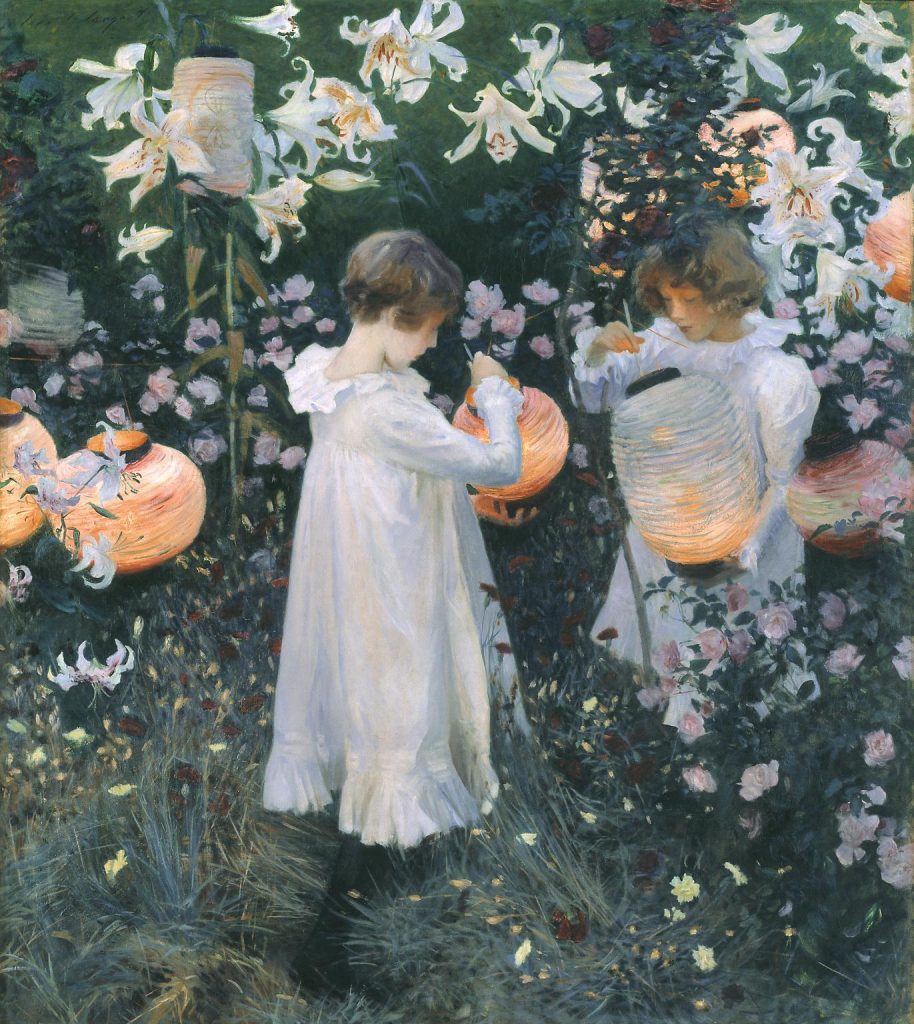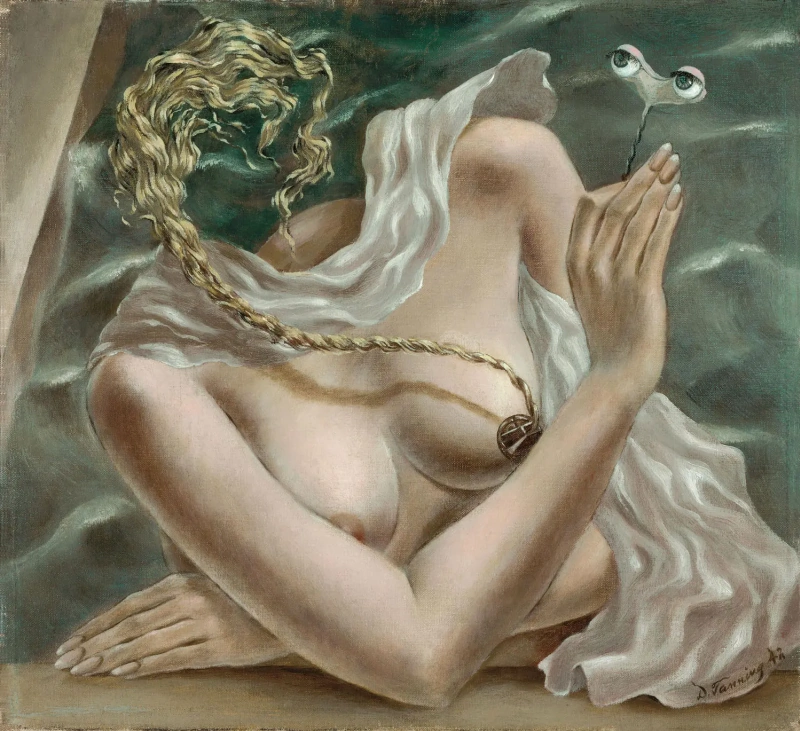Surrealism
Style of art
Surrealism is more than just an artistic style – it’s an artistic movement, gesture, created by the artist itself.
In 1917, the term of ‘surrealist’ was first coined by the French avant-garde poet, Guilliame Apollinaire. He used the term of it in the program notes, called the ballet Parade for Jean Cocteau and Erik Satie, along with Léonide Massine and Pablo Picasso.
However, André Breton, who is known as the ‘Pope’ of Surrealism, officially founded the movement when he published Manifeste du surréalisme in 1924. Breton defined Surrealism as dictation of thought in the absence of all control exerted by reason, outside all moral and aesthetic consideration.
Surrealism was a means of reuniting conscious and unconscious realms of experience completely that both dreams and fantasies joined together to the rational world in “an absolute reality, a surreality” as he called it. Breton sees the unconscious as the fountain of the imagination, which he believed that this could be attained by poets and painters.
In 1925, visual artists such as Giorgio De Chirico, Pablo Picasso, Francis Picabia, and Marcel Duchamp embraced Surrealism and also were recognized in Breton’s publication, “La Révolution Surréaliste.”
Surrealist artists aimed to focus on the unconscious mind in order to unlock their dreams, inner-mind, deepest-creativity, and imagination. Since the Surrealism were well-influenced by the psychoanalysis, they believed that the rational mind suppressed the power of their expression. Therefore, Surrealism suggested that the artists should be balanced and well-aware in both reason and rationality. These techniques became known as automatism or automatic writing, encouraging spontaneity and openness to it’s artist practices.
A fundamental aspect of this ‘automatism’, means that one proposes to express or to act either verbally, or any other ways, in both thoughts and images that comes from it’s unconscious minds and dreams of the artist itself.
Throughout the 1920s, the artists continued to explore the Surrealist concept in art, seeking for complete creative freedom. And that’s when the first exhibition of Surrealism were showcased in 1925 at the Galerie Pierre in Paris, titled “La Peinture Surréaliste”, demonstrating the whole visual components of the movement as it displayed an artwork by Jean Arp, André Masson, Paul Klee, Man Ray, Max Ernst, Pablo Picasso, Giorgio de Chirico, Joan Miro, and many other artists.
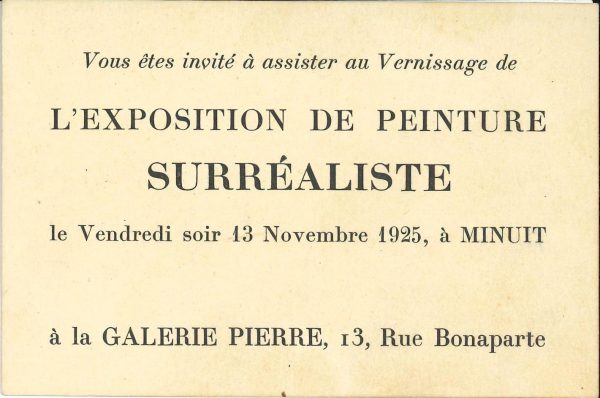
Since Surrealism emphasis on creative freedom, there are numbers of techniques were formed by Surrealist painters to helped capture the thoughts of its unconscious mind.
Many Surrealist artists combined different kind of artistic styles in a single work, creating an uncertain imagery that is hardly to described by the viewers, as it did not provide much explanations on it’s artwork. This style of art aims to create an artwork that made the viewers think, and none of it has a solid answer. They wanted to build a perspective, a what-do-you-see-in-this-painting on a deeper level connection between the viewers and the artwork. Therefore, it has only a few characteristic that you may notice. And that is the beauty, the fascinating concept of Surrealism style of art.
Over the years, Surrealism has gotten bigger and bigger and succeeded to attract world-wide writers, artists, photographers, and filmmakers that quickly became an international movement. It has exerted huge impact on the cultural life of many countries in the interwar years until later.
The peak of the Surrealist happened in 1938, Exposition Internationale du Surréalisme or the International Surrealist Exhibition at Galérie Beaux-Arts in 140 Rue du Faubourg Saint-Honoré. The Gallery was divided into three sections, featuring paintings, objects, unsually decorated rooms, and re-designed mannequins.
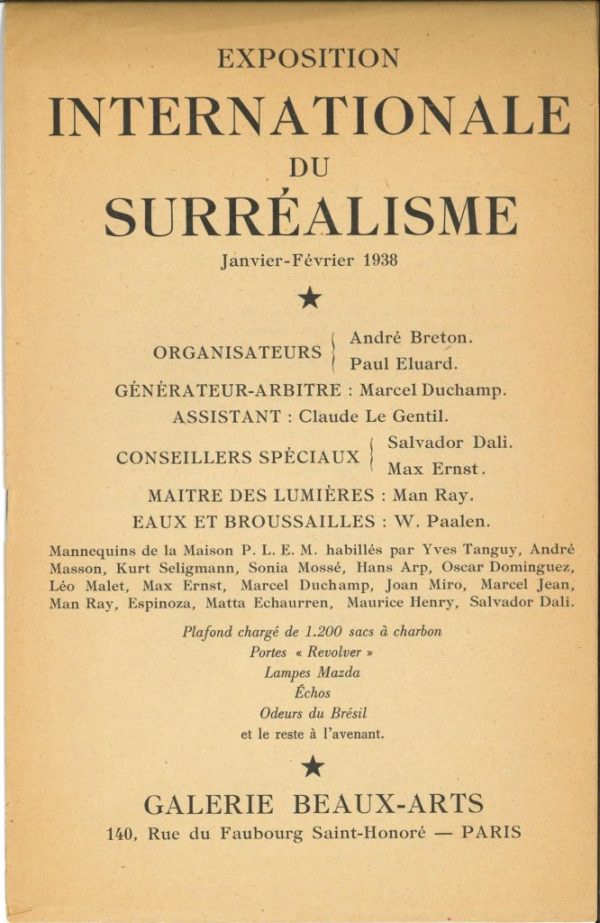
The exhibition was held by many Surrealist artists. André Breton suggested to establish a different framework for displaying the artwork by creating an enchanting vibes of Surrealism. Himself and Nusch Éluard asked Marcel Duchamp to participated and design the exhibition, although he was not officially a part of the Surrealist movement.
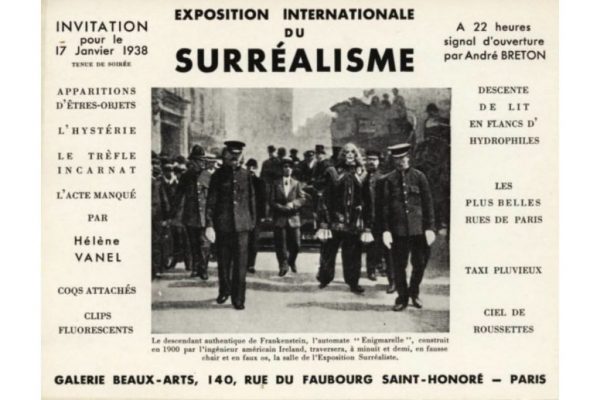
Duchamp, the designer, chose to exhibit the artwork in a dark atmosphere. Therefore the visitors were forced to use flashlights that was handed at the entrance in order to orient themselves in the darkness; this was made to built the sense of disorientation and surprise for the visitors.
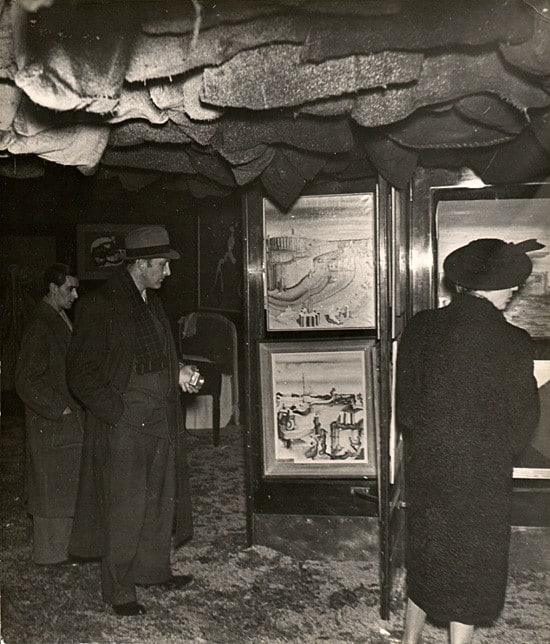
Moving on to the gallery. The first section was the lobby with the installation piece called Taxi Pluvieux (Rain cab) created by Salvador Dali. The second one was Plus Belles Rues de Paris (The most beautiful streets of Paris) contains of re-arranged Surrealist mannequins which was rented from a French manufacturer, while the last section was a center room arranged by Wolfgang Paalen and Marcel Duchamp.
Many objects were positioned on pedestals of different size and the room was decorated with various items, that depict to follow a dreamlike path – at times amusing, at times disturbing – displaying the context of Surreal atmosphere.
The corridor led to the main hall, a central space that resembled a grotto. The artworks were hung on the wall across the gallery, with an artificial pond with real water lilies and reeds on the pool, while the floor was covered with dead leaves. It was designed and created by Wolfgang Paalen.
A thousand two-hundred of coal bags were hanging from the ceiling that were stuffed with newspaper but designed to leak coal dust on the visitors underneath. There were also four beds positioned in the corner of the room covered in satin quilts explicitly invited to abandon reality and symbolically enter the space of dreams, while in the middle stood a lit iron brazier that represent the unconscious. The sounds of cries, hysterical laughter and marching soldiers was played and filled the rooms through a loudspeaker. It increased the immersive, unsettling effect of the environment.
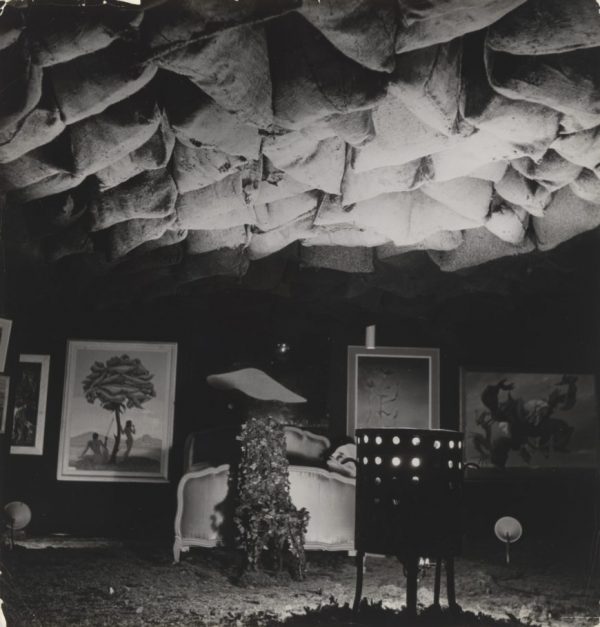
On the opening of the exhibition, Ernst, Dali, and Paalen invited the artist Hélène Vanel to do an art performance, titled “The Unconsummated Act”. She tore her own clothes as she jumped out of pillows while lying on the floor with chains wrapped around her naked body; acted as if she had a hysterical attack, and ended the performance by swaying in the pool.
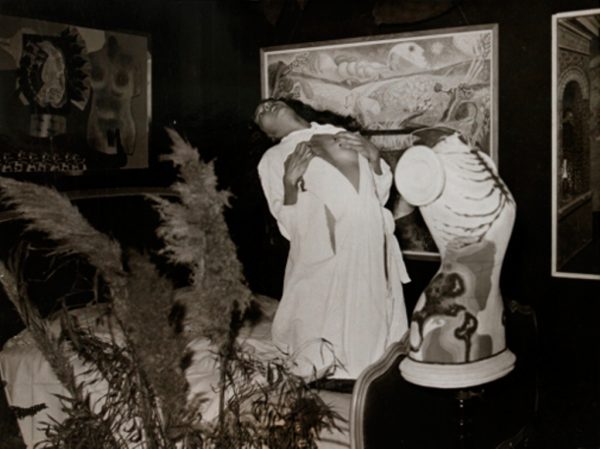
There were two hundred and twenty-nine artworks were presented at this exhibition. Artists and writers like Hans Bellmer, Leonora Carrington, Giorgio de Chirico, Joseph Cornell, Oscar Dominguez, Alberto Giacometti, René Magritte, André Masson, Joan Miró, Yves Tanguy, and many more were also in attendance.
Let’s take a look at these photos that was taken during the International Surrealist Exhibition!
